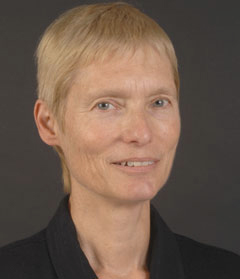  |
 |
a
colloquium
presentation in
the
Zimmerman Recital hall
11 a.m. Thursday, October 6th, 2011
Lebanon Valley College's
 |
 |
|
2011-12 Colloquium Series Studies Money |
|
The Lebanon Valley College Colloquium series considers the
timely topic of Money. The series events will analyze many issues that today’s
politicians and world leaders are faced with, including unemployment,
poverty, and the gender wage gap, as well as discussions on tax policy,
the job market and entrepreneurship, and finally a theoretical
consideration of the very idea of money, the ideology of the free
market, and the morality and theology of capitalism. |
|
~ The Lebanon Valley College Visit
~ |
Images:
Wage Gap Talk
 Luncheon Luncheon  Women's Center Visit
Women's Center Visit  LVC Walkabout
LVC Walkabout
|
|
Hilary Lips Addresses Money & Gender in Wage Gaps |
 The presentation highlights work by Dr. Hilary
M. Lips, professor and chair of psychology and director of the Center for Gender
Studies at Radford University. Using current and historical data from
the Census Bureau and the Bureau of Labor Statistics surveys (the
CPS,
ACS,
ATUS),
the General Accounting Office (GAO)
and other sources, Dr. Lips'
presentation emphasizes the challenges,
difficulties and controversies in assessing the gender wage gap. The presentation highlights work by Dr. Hilary
M. Lips, professor and chair of psychology and director of the Center for Gender
Studies at Radford University. Using current and historical data from
the Census Bureau and the Bureau of Labor Statistics surveys (the
CPS,
ACS,
ATUS),
the General Accounting Office (GAO)
and other sources, Dr. Lips'
presentation emphasizes the challenges,
difficulties and controversies in assessing the gender wage gap.
In her presentation special emphasis is given to the statistics employed
(medians vs. means; income vs. earnings), to the time intervals used in
comparisons (annual vs. weekly vs. hourly), and to the "typical" adjustments
used in controlling for gender differences in earnings
(race/ethnicity, education, marital-family & motherhood status, and work
experience). Regarding this last point, an overview of complications that may be ignored in
using statistical adjustments can be illustrated when wage
gaps are adjusted (minimized) in "controlling for" race and ethnicity.
Using U.S. Census Bureau data from 1988-2010, PowerPoint slide (1) below illustrates the apparent need for
race/ethnicity adjustments.
(1) U.S. Wage Gaps within Race and Ethnicity
 |
In 2010, full-time, year-round Black and Hispanic workers' average
annual median earnings were respectively 73% and 64% of the
average annual median earnings for full-time, year-round White
non-Hispanic workers. From slide (1), it appears as though race and
ethnicity make considerable contributions to the size of the earnings
gap, and as such need to be adjusted for when considering the size of
gender wage gaps.
However, the image of
PowerPoint slide (2) below illustrates why simply adjusting for race and
ethnicity cannot be assumed to be a gender neutral adjustment. Slide (2)
illustrates gender wage gaps within race/ethnicity by
plotting women's annual median earnings as percentages of the annual
median earnings of men in
the same race/ethnicity categories.
(2) U.S. Gender Wage Gaps Within Race and
Ethnicity
 |
Slide (2) illustrates the
confounding of race and ethnicity within gender: For more than two
decades, women's annual median earnings are less than that for males of
the same race or ethnicity. In this Census Bureau data, simply controlling
or removing race and ethnicity effects from wage gaps would also
reduce an important source of gender differences.
When these kind of adjustments are employed empirical evidence that they
are gender neutral needs to be provided. This is also true for other
variables such as occupational choice and education. When commentators confidently state that the gap does not reflect
discrimination, but can be accounted for by other factors, such as the high wages of a few white
men, gendered patterns of occupational and educational choice and
work experience, they ignore the confounding of gender with many of
these variables. The effect of such assertions is to make women feel
complacent about the wage gap—and perhaps to feel that they can avoid
its impact by making the right educational, occupational, and
negotiation-related choices. Such complacency is unwarranted. Hilary
Lips ~ September 2011 |
| ~
~ ~ ~ ~ ~ ~ ~ ~ ~ ~ ~ ~ ~ ~ ~ ~ ~ ~ ~ ~ ~ ~ ~ ~ ~ ~ ~ |
LVC Images:
Wage Gap Talk
 Luncheon Luncheon  Women's Center Visit
Women's Center Visit  Campus Walkabout
Campus Walkabout
|
|
Copyright © 2011 H.
Lips & W. Andrew
|
|
|
|